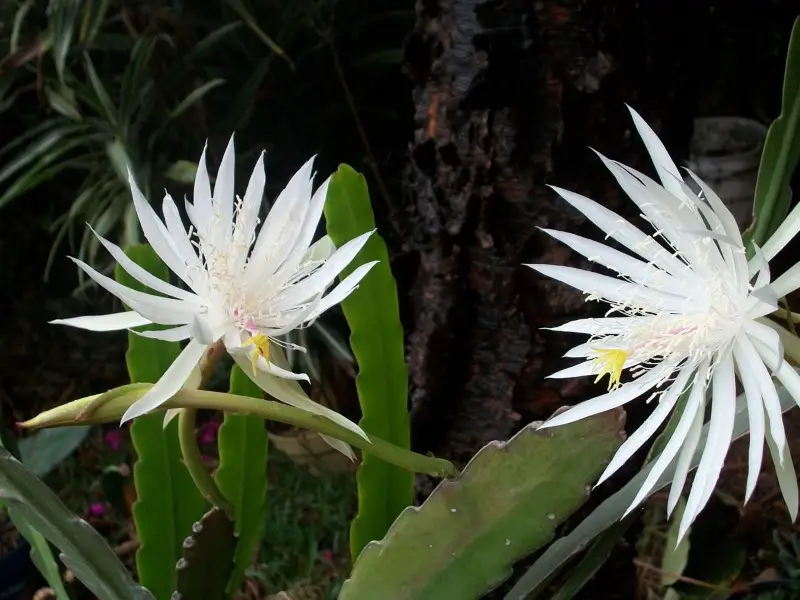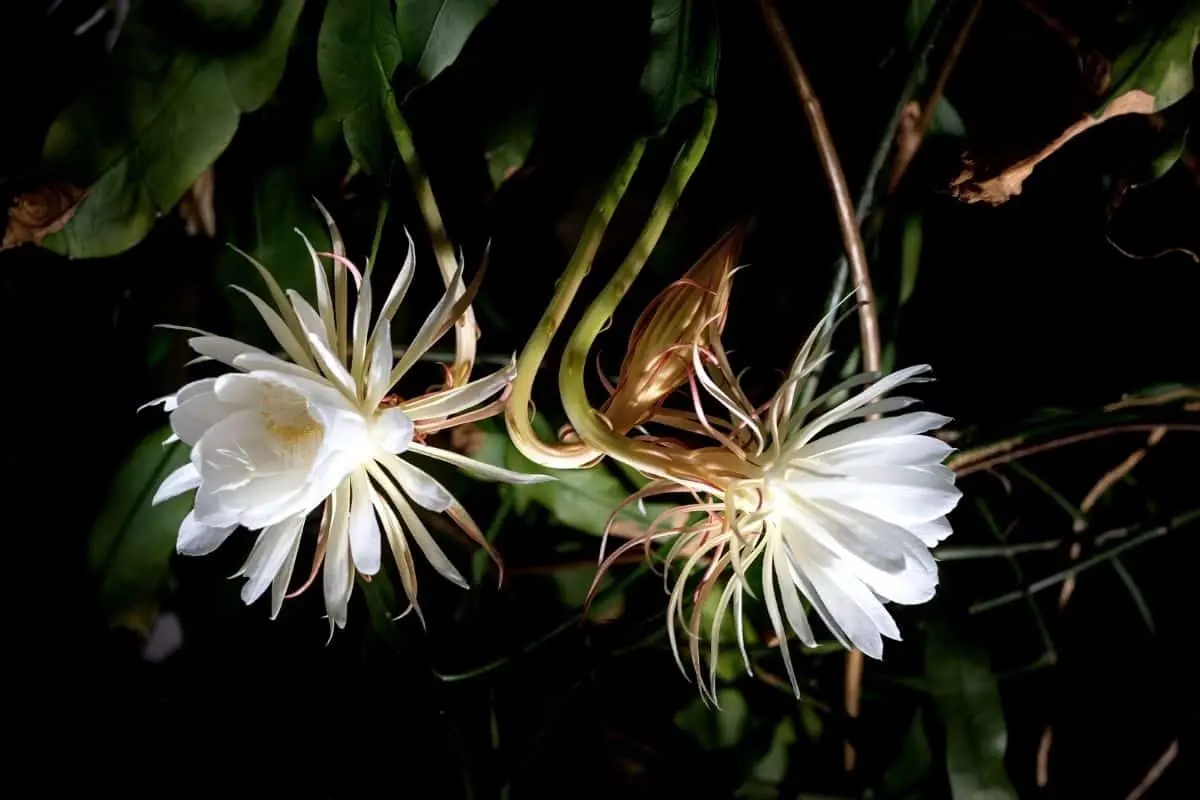Epiphyllum oxypetalum is a popular houseplant that many people love to grow for the supremely fragrant white flowers that only bloom for one night.
When grown indoors or on a balcony, it’s far easier to enjoy the plant’s flowers when they do make an appearance.
How to Plant and Grow Epiphyllum oxypetalum
To enjoy the lovely fragrant blooms of the Epiphyllum, it’s best to plant and grow it in a hanging pot. This way the fleshy green stems can cascade down over the edges of the pot and the flowers will be easy to spot when the plant blooms.
How to Propagate Epiphyllum oxypetalum
The simplest way to propagate new plants from your Epiphyllum oxypetalum is to use stem cuttings. After you take your cuttings, let them dry out for a few days until calluses form on the cut ends.
Plant these into some well-draining potting mix and put them in a warm, bright spot out of direct sunlight. Make sure that you keep them well-watered but not too wet. After about 2 weeks or more, the cuttings should be producing roots.

Queen of the Night Flower Care and Maintenance
The Queen of the Night cactus is fairly easy to look after as long as you get the growing conditions right. You need a good potting mix to start with and must remember not to let the soil dry out.
Soil
The best soil for growing your Queen of the Night plant is a quality potting mix. This applies if you’re growing your plant in a pot. The soil needs to be able to hold some moisture but still be free-draining.
You can mix some perlite into a commercially available potting mix to increase the drainage, if necessary. Or, you can make your own mix by mixing together 2 parts coconut fiber, 2 parts composted pine bark, and 1 part coarse builder’s sand. Then add some organic fertilizer to the mix.
Water
The soil should be kept moist at all times as these plants are regarded as tropicals. Therefore, you don’t want to wait for the soil to dry out before adding water. This is contrary to the requirements of a lot of other succulents and cacti.
Do make sure though, that the pot has drainage holes, as the roots should never be left to sit in water. This can cause root rot which is detrimental to the plant’s health.
As a general guide, you should water your plant about every ten to fourteen days in the spring and fall. In summer, watering once a week or more often is recommended. Then, in winter, you can cut back on the watering to once every two weeks or so. If you have trouble establishing a regular watering schedule, you can always use a moisture meter to check the amount of moisture in the soil.
Fertilizer
Your plant doesn’t require a lot of fertilizer, so adding a slow-release one to the potting mix should be sufficient. However, to promote blooming, you might want to apply some liquid fertilizer to your plant every two to three weeks during spring and summer.
Sunlight
If growing your Epiphyllum oxypetalum indoors, you should choose a bright spot that doesn’t receive direct sunlight. A south-facing window would be ideal. This will allow the plant to receive around six hours of indirect sunlight daily.
If you plan to grow your Epiphyllum oxypetalum outdoors, then you need to choose a spot that receives indirect sunlight. Most importantly, don’t subject your plant to the extreme heat of the midday or afternoon sun as this could harm the plant.
Keeping your Epiphyllum in a pot is the best solution because you can move the pot around so that the plant receives the optimum amount of light. Generally, hanging your pot under a covered veranda or deck is ideal.
Temperature and Humidity
Even though the Queen of the Night cactus is part of the cactus family, it is considered a tropical plant and is not tolerant of hot, dry conditions. Its ideal temperature range is between 50 to 90 degrees Fahrenheit.
The plant also does not tolerate really cold temperatures below 35 degrees Fahrenheit and should not be exposed to frost.
If you’re growing your Epiphyllum indoors, it’s also a good idea to provide a little humidity. You can do this by placing a bowl of water nearby or by lightly misting your plant occasionally.
Pruning
This plant requires very little pruning. You might just give it a light prune if any of the stems become too long, to keep a uniform shape.
Pest and diseases
The only things you need to watch out for are common houseplant pests such as aphids, mealybugs, and spider mites. These can easily be washed off with some water or a damp cloth soaked in insecticidal soap.
Conclusion
With a little care, your Epiphyllum oxypetalum should thrive without too much detailed attention. You just have to ensure that you keep the soil moist and that you provide the correct amount of light and a little humidity.
See more epiphyllum varieties you can grow.
~ image source: depositphotos/ullision

